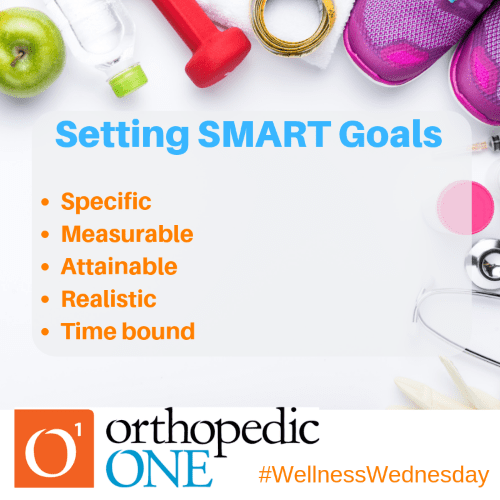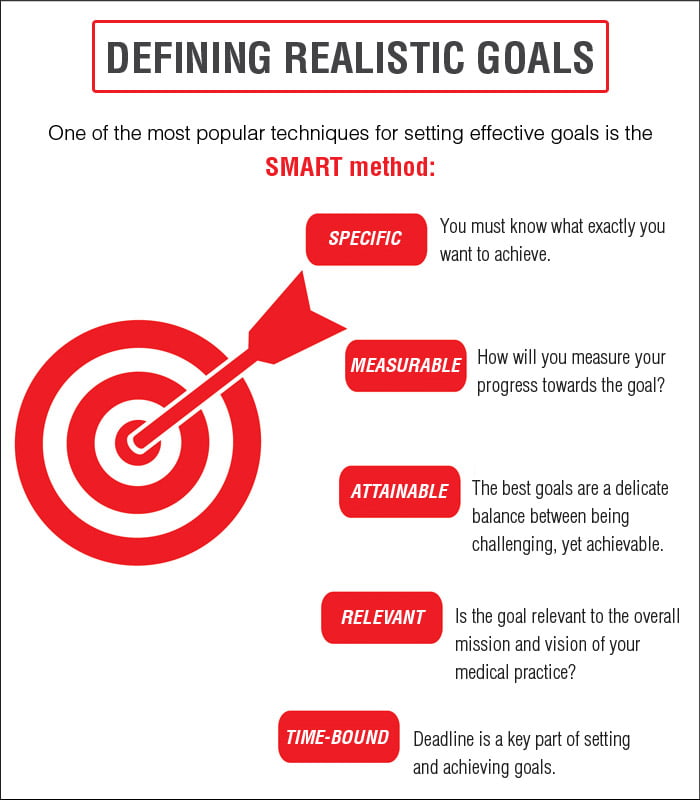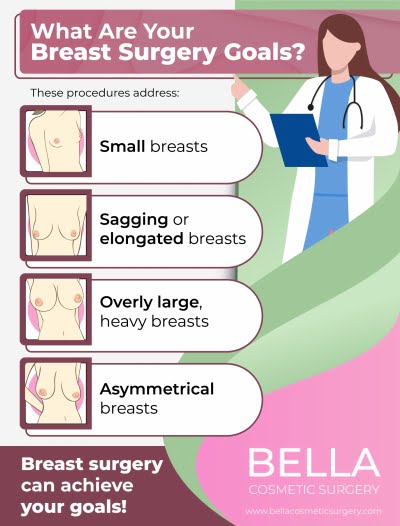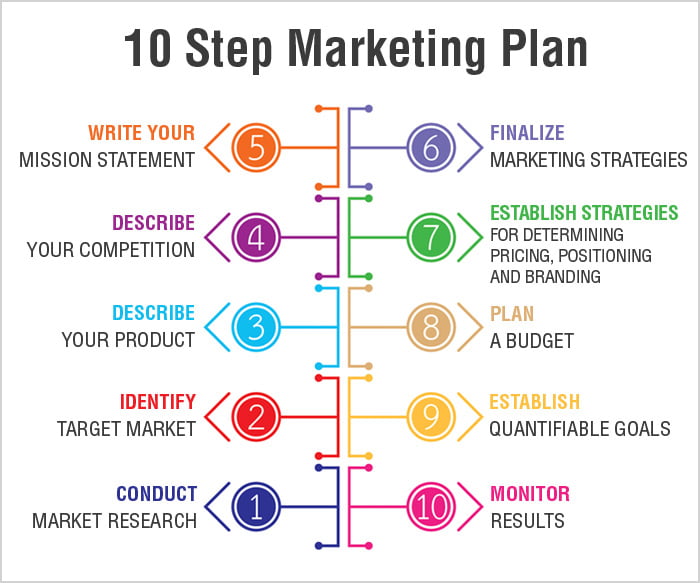Are you considering plastic surgery and wondering how to set achievable goals? Look no further. In this article, we will provide you with valuable insights on how to approach goal setting for your plastic surgery journey. Whether you’re aiming to enhance your appearance, restore lost confidence, or correct certain imperfections, having realistic and attainable goals is key to a successful outcome. So, let’s explore the steps you can take to ensure you’re on the right path towards achieving your desired results.
Factors to Consider Before Setting Goals
Before embarking on a journey to achieve your desired results through plastic surgery, it’s crucial to consider a few factors. These factors will help determine if you are ready and prepared to set goals for your plastic surgery journey.

This image is property of www.orthopedicone.com.
Physical Health Assessment
One of the first and most important factors to consider before setting goals for plastic surgery is your physical health. Prior to undergoing any surgical procedure, it is necessary to ensure that you are in good overall health. A comprehensive physical health assessment, conducted by a qualified healthcare professional, will determine if you are a suitable candidate for plastic surgery. This assessment will take into account your medical history, current health conditions, and any medications you are currently taking. It is important to disclose all relevant information about your physical health to your plastic surgeon to minimize the risk of complications.
Emotional Readiness Evaluation
Plastic surgery can bring about significant changes not only to your physical appearance but also to your emotional well-being. Therefore, it is crucial to evaluate your emotional readiness before setting goals for plastic surgery. Assessing your motivation, expectations, and mental preparedness is essential to ensure a positive outcome. It is important to have realistic expectations and understand the limitations of plastic surgery. A consultation with a mental health professional or therapist can provide valuable insights and guidance in assessing your emotional readiness for the journey ahead.
Financial Considerations
Another important factor that cannot be overlooked is the financial aspect of plastic surgery. It is essential to evaluate your financial situation and understand the costs associated with the procedure you are considering. Plastic surgery is an investment in yourself and your well-being, and it is important to have a clear understanding of the financial commitment involved. Researching the costs of the procedure, including pre-operative and post-operative care, is crucial in setting realistic financial goals and ensuring you can comfortably afford the procedure without causing undue stress.
Realistic Expectations
Setting realistic expectations is vital when considering any type of plastic surgery. It is essential to have a clear understanding of what can and cannot be achieved through plastic surgery. Your plastic surgeon will provide you with information about the expected outcomes of the procedure you are considering. Understanding the limitations and potential risks associated with the procedure will help you set realistic expectations. It is important to remember that plastic surgery is not a magic wand that can completely transform your life. It is a tool that, when used properly, can enhance your natural beauty and boost your self-confidence.
Importance of Setting Realistic Goals
setting realistic goals is of paramount importance when it comes to plastic surgery. It not only helps in managing your expectations but also ensures a positive surgical outcome.
Avoiding Psychological Disappointment
One of the key reasons why setting realistic goals is important in plastic surgery is to avoid psychological disappointment. If your expectations are unrealistic or excessively high, it can lead to dissatisfaction and psychological distress after the surgery. By setting realistic goals, you will have a clearer understanding of what can be achieved through plastic surgery and be more satisfied with the results.
Enhance Overall Satisfaction
Setting realistic goals for plastic surgery also enhances overall satisfaction. By having a clear vision of what you hope to achieve, you can work collaboratively with your plastic surgeon to develop a treatment plan that aligns with your objectives. When you achieve your goals, it can greatly improve your self-esteem and overall satisfaction with the outcome of the procedure.

This image is property of www.practicebuilders.com.
Aim for Natural Results
Setting achievable goals is important to ensure that the results of your plastic surgery procedure appear natural and harmonious with your existing features. Unrealistic goals can lead to an unnatural or artificial appearance, which is not the desired outcome for most individuals seeking plastic surgery. By setting realistic goals, you can aim for results that enhance your natural beauty and complement your unique attributes.
Minimize Risk of Complications
Setting realistic goals also helps in minimizing the risk of complications during and after the surgical procedure. Unrealistic goals may require excessive procedures or aggressive interventions that can increase the risk of complications. By working with your plastic surgeon to set achievable goals, you can ensure that the chosen procedure is safe and appropriate for your specific needs and circumstances.
Guidelines for Setting Achievable Goals
To set achievable goals for plastic surgery, it is important to follow a set of guidelines. These guidelines will assist you in making informed decisions and ensure a successful outcome.
Consultation with a Qualified Plastic Surgeon
The first and most crucial guideline is to seek a consultation with a qualified plastic surgeon. A reputable plastic surgeon will evaluate your specific needs and provide you with an honest assessment of the outcomes that can be realistically achieved. They will guide you in setting realistic goals that align with your desires and physical attributes. The expertise and experience of a qualified plastic surgeon are instrumental in setting achievable goals for your plastic surgery journey.
Understanding the Procedure
Before setting goals for plastic surgery, it is important to have a comprehensive understanding of the procedure. Researching and educating yourself about the chosen procedure will ensure that you have realistic expectations and are fully informed about the potential risks and benefits. Consultation sessions with your plastic surgeon will provide additional insight and clarity, enabling you to set achievable goals based on your understanding of the procedure.
Evaluating Recovery Time
Recovery is an essential phase of any plastic surgery procedure. It is important to consider the recovery time associated with the procedure you are considering when setting your goals. Understanding the anticipated recovery period will help you plan your personal and professional commitments accordingly. By considering the recovery time, you can set goals that are practical and realistic within the given time frame.
Developing a Realistic Timeline
Setting achievable goals for plastic surgery also involves developing a realistic timeline. It is important to plan and set milestones that will help you track your progress and achieve your goals within a reasonable time frame. Your plastic surgeon can assist you in developing a timeline that aligns with your goals, taking into consideration factors such as recovery time, healing process, and desired outcomes. A well-planned timeline will help ensure that you stay on track and achieve your goals successfully.
Types of Goals in Plastic Surgery
When it comes to plastic surgery, there are various types of goals that individuals may have. Understanding these different goals can assist you in setting your own goals and expectations for the procedure.

This image is property of www.psurgery.com.
Improving Physical Appearance
One of the most common goals in plastic surgery is to improve one’s physical appearance. Plastic surgery offers numerous procedures that can help individuals enhance or modify specific features of their body or face. Whether it is reducing the size of a prominent nose, enhancing the shape of the breasts, or contouring the body, the goal is to achieve a physical appearance that aligns with your personal aesthetic preferences.
Correcting Physical Limitations
Plastic surgery can also help correct physical limitations or abnormalities that may have been present since birth or acquired due to an injury or medical condition. Procedures such as cleft lip and palate repair or reconstructive surgeries for individuals with birth defects aim to improve functionality and enhance quality of life. Correcting physical limitations is a goal that brings about positive changes not only in physical appearance but also in overall well-being.
Reconstructive Goals
Reconstructive goals involve restoring form and function to areas that have been affected by trauma, disease, or previous surgical procedures. Reconstructive plastic surgery aims to repair and rebuild areas of the body that have been damaged or lost due to various reasons. Whether it is reconstructing a breast after mastectomy or repairing facial features after a traumatic injury, reconstructive goals focus on restoring normalcy and improving quality of life.
Maintaining and Enhancing Results
Another important type of goal in plastic surgery is maintaining and enhancing the results of previous procedures. Plastic surgery is not a permanent solution, and the effects of aging, weight fluctuations, and lifestyle factors can impact the results over time. Setting goals to maintain and enhance the results of previous procedures can help individuals maintain their desired physical appearance and boost their self-confidence.
Setting Goals for Facial Procedures
Facial procedures are among the most popular types of plastic surgery. When setting goals for facial procedures, it is important to consider various factors that contribute to facial aesthetics and overall satisfaction.
Addressing Specific Facial Features
One of the key goals in facial procedures is to address specific facial features that may be causing dissatisfaction or self-consciousness. Whether it is the shape of the nose, the size of the chin, or the appearance of the eyes, facial procedures can help modify or enhance these features to achieve a more balanced and harmonious facial appearance. By setting goals to address specific facial features, individuals can achieve a more confident and attractive facial profile.
Achieving Facial Harmony
Facial harmony is another crucial goal when it comes to facial procedures. It involves achieving a balance between different facial features, ensuring that they complement each other and create a harmonious overall appearance. Setting goals to achieve facial harmony can help individuals achieve a natural and aesthetically pleasing result that enhances their facial beauty.

This image is property of d11upr8lrcn9x7.cloudfront.net.
Facial Rejuvenation
Facial rejuvenation is a common goal among individuals seeking facial procedures. As we age, the skin loses elasticity, wrinkles develop, and the face may appear tired or sunken. Facial procedures such as facelifts, dermal fillers, or Botox injections can help rejuvenate the face, reducing the signs of aging and restoring a more youthful appearance. Setting goals for facial rejuvenation can help individuals regain their confidence and achieve a fresher, more vibrant look.
Anti-Aging Goals
In addition to facial rejuvenation, setting anti-aging goals is also important when considering facial procedures. Anti-aging goals focus on not only treating existing signs of aging but also slowing down the progression of aging in the future. By setting goals to address specific concerns such as fine lines, wrinkles, or sagging skin, individuals can maintain a more youthful appearance and delay the signs of aging.
Setting Goals for Body Contouring Procedures
Body contouring procedures aim to reshape and sculpt the body, enhancing its proportions and improving overall body shape. When setting goals for body contouring procedures, the following factors should be considered.
Targeting Problem Areas
One of the key goals in body contouring procedures is targeting specific problem areas. Whether it is excess fat deposits in the abdomen, thighs, or hips, or loose skin after significant weight loss, body contouring procedures can help address these areas and create a more toned, sculpted physique. Setting goals to target problem areas ensures that individuals can achieve a body shape that they are confident and comfortable with.
Achieving Proportional Body Shape
An important goal in body contouring procedures is achieving a proportional body shape. This involves creating balanced proportions between different areas of the body, ensuring that the overall body shape is visually appealing. By setting goals to achieve proportional body shape, individuals can achieve a more attractive silhouette and enhance their self-confidence.
Weight Loss Goals
For individuals who are considering body contouring procedures after significant weight loss, setting weight loss goals is important. Losing excess weight through a combination of healthy eating and regular exercise is often a prerequisite for body contouring procedures. Setting realistic weight loss goals, alongside the guidance of a healthcare professional, can ensure that individuals are able to reach their target weight before undergoing body contouring procedures, leading to optimal results.
Post-Pregnancy Goals
Many women seek body contouring procedures after pregnancy to restore their pre-pregnancy figure. Setting goals for post-pregnancy body contouring involves addressing specific concerns such as stretch marks, loose skin, or weakened abdominal muscles. By setting post-pregnancy goals, individuals can regain their pre-pregnancy body shape and boost their self-confidence.
Setting Goals for Breast Procedures
Breast procedures are a popular choice for individuals who desire to enhance or restore the appearance of their breasts. When setting goals for breast procedures, it is important to consider individual preferences and specific concerns.

This image is property of www.practicebuilders.com.
Increasing Breast Size
One of the primary goals in breast procedures is increasing breast size. Many individuals may desire larger breasts to achieve the desired proportions and enhance their body shape. By setting goals to increase breast size, individuals can achieve a fuller, more voluptuous bustline that aligns with their aesthetic preferences.
Improving Breast Symmetry
Breast symmetry is a common concern for many individuals. A significant disparity in breast size or shape can cause self-consciousness and dissatisfaction. Setting goals to improve breast symmetry involves addressing these concerns and achieving a more balanced appearance. By setting goals to improve breast symmetry, individuals can enhance their overall body proportions and boost their self-esteem.
Reconstructive Goals
Reconstructive goals are an important consideration in breast procedures. For individuals who have undergone a mastectomy or have congenital breast abnormalities, breast reconstruction is a viable option. Setting reconstructive goals involves restoring the appearance and form of the breasts, providing individuals with a sense of wholeness, and improving their quality of life.
Restoring Breast Appearance after Pregnancy or Weight Loss
Pregnancy and significant weight loss can cause changes in the size, shape, and firmness of the breasts. Setting goals to restore the appearance of the breasts after these life events involves addressing concerns such as sagging or deflated breasts and achieving a more youthful and perky breast appearance. By setting goals to restore breast appearance, individuals can regain their confidence and feel more comfortable in their own bodies.
Setting Goals for Gender Confirmation Surgery
For individuals seeking gender confirmation surgery, setting goals that align with their desired gender identity is crucial. Gender confirmation surgery, also known as sex reassignment surgery, aims to help individuals align their physical body with their gender identity.
Clarifying Gender Identity
The first step in setting goals for gender confirmation surgery is clarifying one’s gender identity. It is essential for individuals to have a clear understanding of their own gender identity and the desired physical changes they wish to achieve. Working with a mental health professional or therapist experienced in gender identity can provide valuable guidance and support during this process.
Understanding the Procedure Options
Another important aspect in setting goals for gender confirmation surgery is understanding the available procedure options. Gender confirmation surgery encompasses a range of surgical procedures, including chest reconstruction (for transgender men), breast augmentation (for transgender women), genital reconstruction, and other procedures that align with an individual’s gender identity. By understanding the procedure options, individuals can set goals that are in line with their desired physical transformation.
Emotional Goals
In addition to physical transformation, setting emotional goals is important in gender confirmation surgery. Achieving emotional well-being and mental alignment with one’s gender identity is a key component of the overall goal. Setting emotional goals may involve addressing concerns such as body dysphoria, self-acceptance, and mental health support. Working with mental health professionals specializing in gender dysphoria can provide the necessary support and guidance to help individuals achieve their emotional goals.
Physical Transformation Goals
Setting physical transformation goals is a major aspect of gender confirmation surgery. These goals encompass the desired changes in body shape, breast appearance, or genital reconstruction, depending on the individual’s gender identity. Working closely with a qualified plastic surgeon experienced in gender confirmation surgery is essential in setting realistic and achievable physical transformation goals. By setting physical transformation goals, individuals can align their physical body with their gender identity and achieve a sense of authenticity.
Importance of Goal Evaluation and Revision
The journey of setting and achieving goals for plastic surgery does not end with the surgical procedure. It is important to continuously evaluate and, if necessary, revise your goals to ensure long-term satisfaction and well-being.
Regular Follow-up with the Surgeon
Regular follow-up appointments with your plastic surgeon are essential to assess your progress and evaluate the outcomes of the procedure. These appointments provide an opportunity to discuss your goals, address any concerns, and make any necessary adjustments to your treatment plan. Staying in touch with your plastic surgeon ensures that your goals are continuously evaluated and revised if needed.
Assessing Satisfaction and Outcomes
As part of the goal evaluation process, it is important to assess your level of satisfaction and the outcomes of the procedure. Reflecting on whether your goals have been achieved and if they align with your initial expectations is crucial. If you are not fully satisfied with the results or feel that your goals have not been met, it is important to communicate this with your plastic surgeon. They can work with you to revise your goals or explore additional options to help achieve the desired outcome.
Revising Goals if Necessary
Occasionally, goals may need to be revised or modified based on personal preferences or changes in circumstances. It is important to be open to revising your goals if necessary. Life events, changes in aesthetic preferences, or adjustments in personal circumstances may require a reevaluation of your goals. Your plastic surgeon can provide guidance and support in revising your goals to ensure they remain realistic and achievable.
Long-Term Maintenance and Self-Care
Long-term maintenance and self-care are crucial in achieving and maintaining your goals for plastic surgery. This involves adopting a healthy lifestyle, including proper nutrition, regular exercise, and taking care of your mental and emotional well-being. By practicing self-care and maintaining a healthy lifestyle, you can optimize the outcomes of your plastic surgery procedure and enjoy long-term satisfaction.
Conclusion
Setting achievable goals for plastic surgery is a vital step in ensuring a successful and satisfying outcome. Factors such as physical health assessments, emotional readiness evaluations, financial considerations, and realistic expectations should all be taken into account before setting goals. By setting realistic goals, individuals can avoid psychological disappointment, enhance overall satisfaction, aim for natural results, and minimize the risk of complications. Guidelines such as consultation with a qualified plastic surgeon, understanding the procedure, evaluating recovery time, and developing a realistic timeline are instrumental in setting achievable goals. Finally, understanding the different types of goals for specific plastic surgery procedures, including facial, body contouring, breast, and gender confirmation surgeries, can help individuals set goals that align with their desired outcomes. Goal evaluation and revision are also important to ensure long-term satisfaction, and regular follow-up with the surgeon, assessing satisfaction and outcomes, revising goals if necessary, and prioritizing long-term maintenance and self-care are integral aspects of this process. By following these guidelines and considerations, individuals can set achievable goals for their plastic surgery journey and achieve the desired results.

